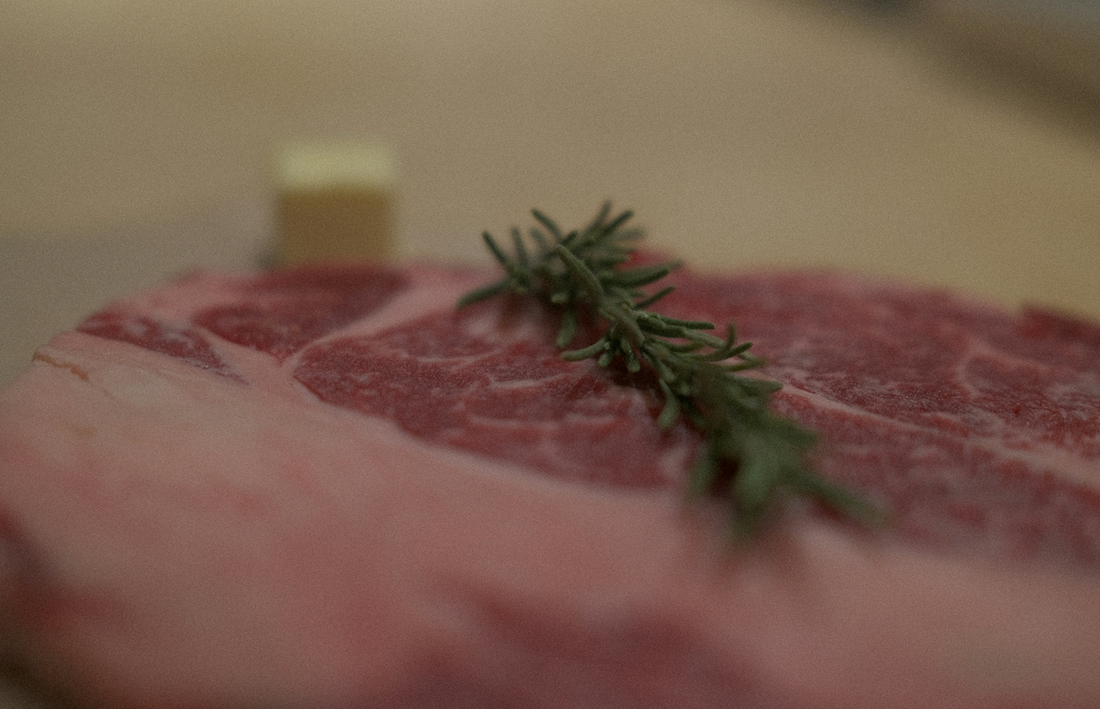
How Aging Changes Wagyu Beef
Share
Wagyu beef is already renowned for its rich marbling, tenderness, and buttery flavor. But there’s another layer of depth that can elevate Wagyu from extraordinary to unforgettable: aging.
At Jackson Livestock, we know that how beef is aged directly impacts flavor and texture. Dry-aging and wet-aging are two distinct processes, each offering unique benefits and considerations. For Wagyu—where fat quality is just as important as muscle structure—understanding these techniques is essential.
In this article, we’ll explore the science, methods, risks, and rewards of aging Wagyu beef, and share insider insights into how you can appreciate this process whether at a steakhouse or in your own kitchen.
What Is Beef Aging?
Beef aging is the controlled process of holding beef under specific conditions to enhance tenderness and develop flavor.
-
Enzymatic Breakdown: Natural enzymes slowly tenderize muscle fibers.
-
Flavor Development: Aging allows flavors to concentrate, intensify, and in some cases, develop nutty or earthy notes.
With Wagyu, aging has the potential to amplify its luxurious qualities—but only if it’s done correctly.
Dry-Aging Wagyu Beef
Dry-aging is the traditional method of aging beef and remains the gold standard for flavor development.
How It Works
-
Beef is stored in a climate-controlled environment (34–38°F, 80–85% humidity).
-
Air circulates freely, allowing moisture to evaporate and flavors to concentrate.
-
Enzymes break down muscle fibers, enhancing tenderness.
Flavor Profile
-
Intensely beefy, nutty, and earthy notes.
Richer depth of flavor compared to wet-aging.
Risks & Challenges
-
Trim Loss: Outer crust of meat must be trimmed, reducing yield.
-
Time Investment: Typically aged 21–60 days, sometimes longer.
-
Specialized Equipment: Requires precise control of temperature, airflow, and humidity.
For highly marbled Wagyu, dry-aging can create an incredibly rich, almost decadent eating experience—but it must be done carefully to avoid overpowering the beef’s natural delicacy.
Wet-Aging Wagyu Beef
Wet-aging is a modern method used by many processors.
How It Works
-
Cuts are vacuum-sealed in plastic and stored under refrigeration.
-
Aging occurs in the absence of oxygen, relying solely on enzymatic breakdown.
Flavor Profile
-
Clean, slightly metallic, with a fresher beef taste.
-
Lacks the concentrated nutty notes of dry-aging, but retains juiciness.
Benefits
-
No Trim Loss: All of the meat is usable.
-
Consistent Results: Easier to manage than dry-aging.
-
Efficiency: Typically 14–28 days of aging.
For Wagyu, wet-aging preserves tenderness and juiciness, making it a reliable option for those who want to maximize yield without altering the beef’s natural buttery flavor too much.
Dry-Aged vs. Wet-Aged: Which Is Better for Wagyu?
The answer depends on what you value most:
-
For Flavor Intensity: Dry-aged Wagyu offers unparalleled richness.
-
For Juiciness & Efficiency: Wet-aged Wagyu retains more of its natural buttery texture.
-
For High-End Steaks: Ribeye, striploin, and sirloin benefit most from dry-aging.
-
For Everyday Cuts: Wet-aging works well for smaller or leaner cuts.
At Jackson Livestock, we view aging as a complement—not a replacement—for Wagyu’s genetic advantages. The marbling already delivers unmatched tenderness; aging simply brings out different expressions of that excellence.
Can You Age Wagyu at Home?
While home dry-aging kits are available, true dry-aging requires precise environmental control to avoid spoilage. Here are some guidelines:
-
Start Small: Try wet-aging by vacuum sealing beef and refrigerating for 2–3 weeks.
-
Use a Dedicated Space: If attempting dry-aging, use a small dedicated fridge with humidity control.
-
Monitor Constantly: Check temperature, airflow, and meat condition daily.
For most home cooks, wet-aging is the safest entry point. Dry-aging is best left to professionals with specialized equipment.
How Aging Impacts Health and Safety
-
Dry-Aging: Must be carefully monitored to prevent mold growth and contamination.
-
Wet-Aging: Safer and easier to manage, but must remain refrigerated at all times.
-
Shelf Life: Aged beef must be consumed relatively quickly once opened or cut.
Food safety is always paramount—especially with premium cuts like Wagyu.
USDA Food Safety Guide on Beef Storage
Jackson Livestock’s Approach to Wagyu Aging
At Jackson Livestock, we’re committed to letting the natural quality of Wagyu shine. That means:
-
Finishing First: Genetics, feed, and care create beef with world-class marbling.
-
Selective Aging: Certain cuts are aged to highlight their best qualities.
-
Transparency: We educate customers on how aging changes flavor so they can make informed choices.
Learn more about how we raise Wagyu ethically and sustainably.
Practical Tips for Customers
When shopping or ordering Wagyu:
-
Ask About Aging: Not all Wagyu is aged, and methods vary.
-
Try Both: Experience dry-aged and wet-aged Wagyu to discover your preference.
-
Start Simple: If it’s your first Wagyu experience, try wet-aged ribeye to appreciate the pure buttery flavor.
-
Save Dry-Aged for Special Moments: It’s bold, complex, and perfect for celebrations.
The Reward of Aging Wagyu
Aging is both an art and a science. Done right, it amplifies Wagyu’s strengths—creating beef that’s more flavorful, tender, and memorable.
Whether you prefer the nutty intensity of dry-aged Wagyu or the clean richness of wet-aged, understanding the process deepens your appreciation of what’s on your plate.
In the end, aging is the final touch that transforms premium Wagyu into an unforgettable experience.
